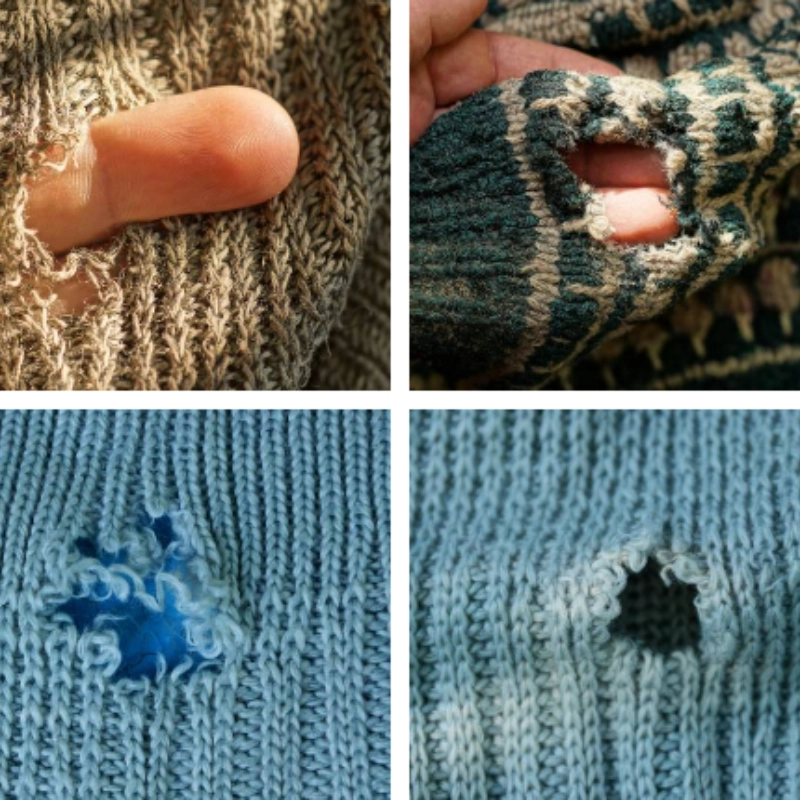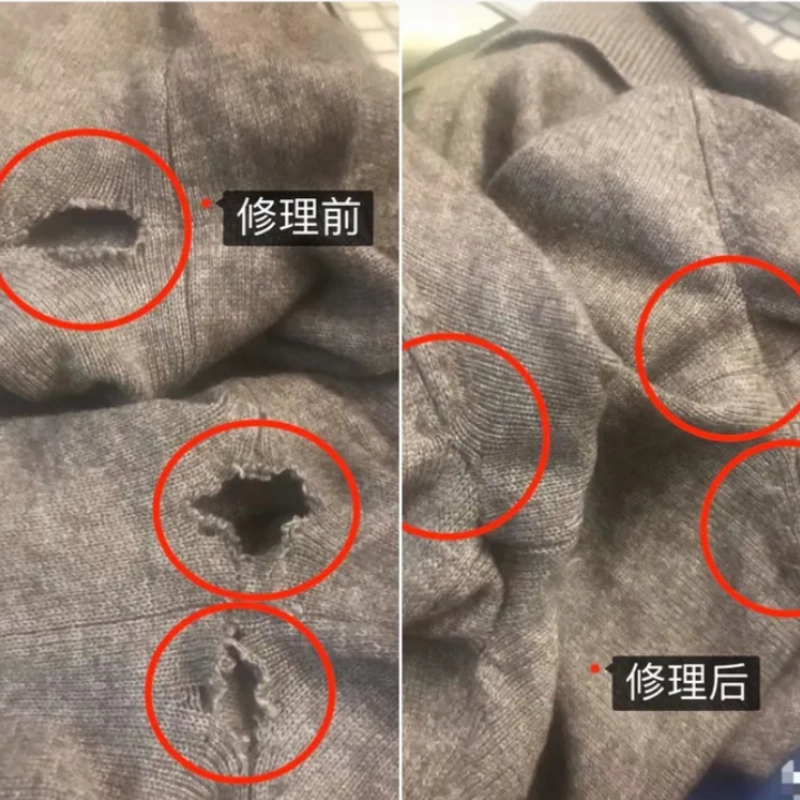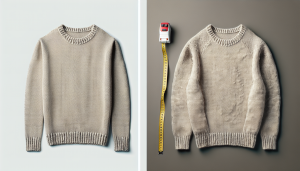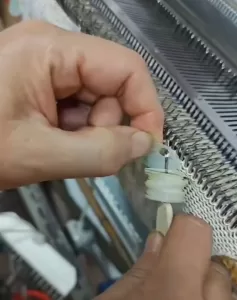
- Knitted clothing (such as wool sweaters, knitwear, mink, etc.) when there is a hole, pulling or off the line, you can make a seamless repair, and even do not need to match the line. This is because when the garment is knitted, a portion of the surplus thread is left hidden in the seams, so any size hole can be repaired with the right skill.
- Customizing a quality wool sweater is more cost-effective than buying an expensive branded cashmere sweater. Look for a nearby tailor to customize a cashmere sweater that is light and warm, and more cost-effective. The basic style is good enough to wear, and the black basic cashmere sweater is a must-have piece of clothing for our family members to handle the cold, even at minus ten degrees in Hokkaido.

- For veteran knitters, you can imitate any wool sweater if you find the same yarn, because style boils down to the number of stitches.
- When a knitwear sweater is pilling, use a ball shaver to gently handle it. For thicker yarns, you can use small scissors to carefully trim away the balls of wool.
- Regarding washing methods for wool and cashmere, the best option is of course dry cleaning. If you want to wash them yourself, gently hand wash them with a small amount of shower gel and then tumble dry, with the water temperature not exceeding 30 degrees. Laundry detergent is not recommended because in most cases it makes cashmere clothes harder and harder to wash, while shower gel makes them softer and softer. There are also special cashmere detergents on the market, but usually, we use shower gel in our house and it works well.
- If a sweater or other clothing appears to be pulling, the easiest way to deal with it is to use a fine needle on the reverse side to pull the pull back, and then gently pull the pulling area with your hand, which will gradually shrink over time and with a few washes. However, if the garment is not stretchy, the process may be a little slower.
- Cashmere sweaters usually do not shrink, but not absolutely. Different production processes and yarn twists will affect the shrinkage properties of cashmere sweaters. Generally speaking, cashmere sweaters will not shrink severely, and a little shrinkage will be gradually recovered with wear.
- When the cashmere sweater is not worn, it is recommended to place a desiccant and pay attention to prevent insect infestation.
- Cashmere sweaters usually become looser after a period of wear, while wool sweaters become tighter.
- If a cashmere sweater or a wool sweater shrinks, it can be worn wet after washing without tumble drying, or it can be taken to a dry cleaner for a large steam iron; cashmere fibers are usually stretchable.
- Neither wool nor cashmere sweaters should be washed in hot water, as these animal fibers shrink in hot water.
- If a knitwear sweater smells bad when you get it home or after washing it, it is likely that the yarn is of poor quality. Qualified knitwear does not leave the factory with an odor. It is very likely that the odor is present. high and presumably the yarn is of poor quality, but this is not absolute. It is just a reminder that knitwear does not need to emit an odor during the production process.
- Machine washing is not recommended for wool and cashmere sweaters, but tumble-drying does very little damage. In fact, even if you take them to a dry cleaner, they will tumble dry them. Tumble drying is better for the care of your clothes than natural drying or hand squeezing.
- Seamless, one-piece garments are comfortable to wear, but they are difficult to repair if there are holes in them because there are no seams throughout the garment, so there are no extra threads to repair the holes.
These are 14 important facts about wool sweater care, which we hope will provide you with a useful guide to care for your wool sweater. Proper care will extend the life of your clothing and maintain its original quality and appearance. Remember to take care of your woolen sweaters, they will keep you warm and comfortable to wear.



